by A. Wayne Ferens
Images Courtesy of the Smithsonian Institution, Wayne Ferens Collection
Published 12.2.2020
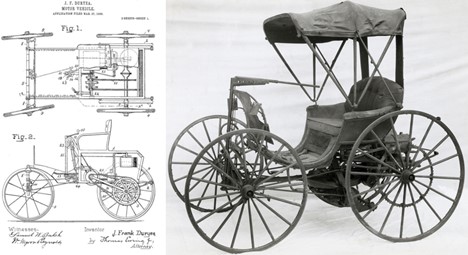 The first 1893 Duryea motor vehicle, donated to the Smithsonian in 1920 (Smithsonian Institution)
The first 1893 Duryea motor vehicle, donated to the Smithsonian in 1920 (Smithsonian Institution)
Charles E. (1861-1938) and J. Frank Duryea (1869-1967) were born in Canton, Illinois and became known as the "Bicycle Brothers" for making their own bicycles and inventing bicycle improvements at their shop in Washington, D.C. towards the end of the 19th century.
By the early 1890s, they were headquartered in Springfield, Massachusetts and became interested in new gasoline engines and self-powered wagons. The brothers purchased a used horse drawn wagon for $70 and installed their first single cylinder four-horsepower free-piston gasoline engine that Frank built at their shop on 47 Taylor Street. After the buggy was fitted with a friction transmission, low tension ignition and a spray-type carburetor, the brothers, with Charles at the tiller, road tested the first-ever, working American-made gasoline-powered automobile on September 20, 1893.
The first motor vehicle race in America was held in Chicago in 1895 and was sponsored by H. H. Kohlsaat, owner of the Chicago Times-Herald. The contest was being held "with a view of stimulating invention and rousing an interest" in this new form of transportation. It drew 70 entrees. Kohlsaat also offered a $500 prize for anyone who came up with a proper name for this horseless carriage. Thousands of suggestions were sent to the Times-Herald, and the prize was divided among three people who proposed the word "motocycle." Kohlsaat began publishing the first auto trade journal, entitled The Motocycle Maker and Dealer, later that same year. The name "motocycle" never caught on with Americans, but eventually the word "automobile" did. In January 1899, the New York Times was the first publication to use the word "automobile" in an editorial, criticizing it as a mixture of Greek and Latin origin.
At 8:55 am on November 28,1895, six motor vehicles left Chicago's snow-covered Jackson Park for a 54-mile road race to Evanston, Illinois and back. Car Number 5, the second car built by inventor Frank Duryea, won the race in just over 10 hours at an average speed of 7.3 mph, earning the $2,000 prize money. The next day’s Times-Herald reported: "Persons who are inclined to decry the development of the horseless carriage will be forced to recognize it as an admitted mechanical achievement, highly adapted to some of the most urgent needs of our civilization."
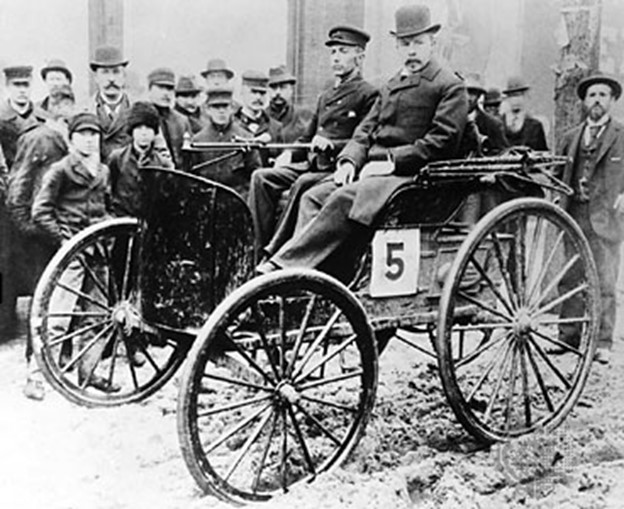 Frank Duryea (left) and race umpire A.W. White after the 1895 Chicago race (Wayne Ferens Collection)
Frank Duryea (left) and race umpire A.W. White after the 1895 Chicago race (Wayne Ferens Collection)
After Frank won the Chicago race, demand grew for the Duryea Motor Wagon. In March 1896, Charles Duryea founded the Duryea Motor Wagon Company, the first incorporated American business for the expressed purpose of building automobiles for sale to the public. The workers started building the first of 13 cars sold that year by hand at their Taylor Street facility -- and thus Duryea became the first ever commercially produced vehicle and the largest automobile factory in the United States.
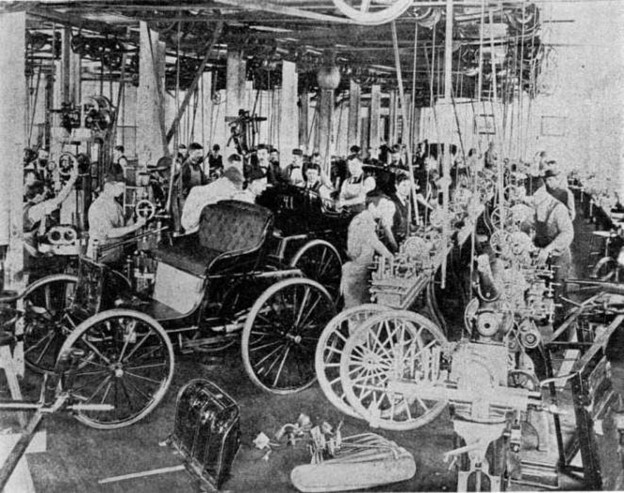 Workmen in the Duryea factory hand building 1896 Motor Wagons (Smithsonian Institution)
Workmen in the Duryea factory hand building 1896 Motor Wagons (Smithsonian Institution)
Duryea Motor Wagon Company went under in 1898 having built a total of 13 cars, but not without achieving several other “firsts.” The first ten production vehicles were the first automobiles sold in the United States, and Duryea was the first car company to advertise using print media. They were the first American automobile to enter, and the first car to win the London to Brighton Car Run in 1896 finishing one hour ahead of the next closest arrival. A total of 33 cars were entered in the 54-mile race.
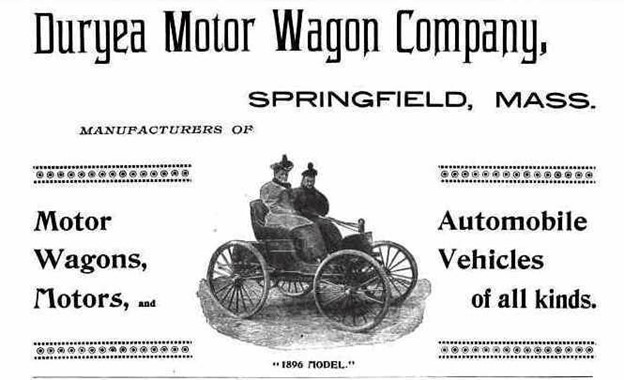 An early Duryea ad (Wayne Ferens Collection)
An early Duryea ad (Wayne Ferens Collection)
A Duryea Motor Wagon was also involved in America's first known automobile accident. New York City motorist Henry Wells hit a bicyclist with his new Duryea. The bicycle rider suffered a broken leg, Wells spent a night in jail, and the nation's first traffic accident was recorded.
That first Duryea Motor Wagon was put into storage in 1894 in Springfield. It remained there forgotten until 1920, when it was rescued by a former Duryea employee and engineer Inglis Moore Upercu and presented to the United States National Museum, part of the Smithsonian Institution.
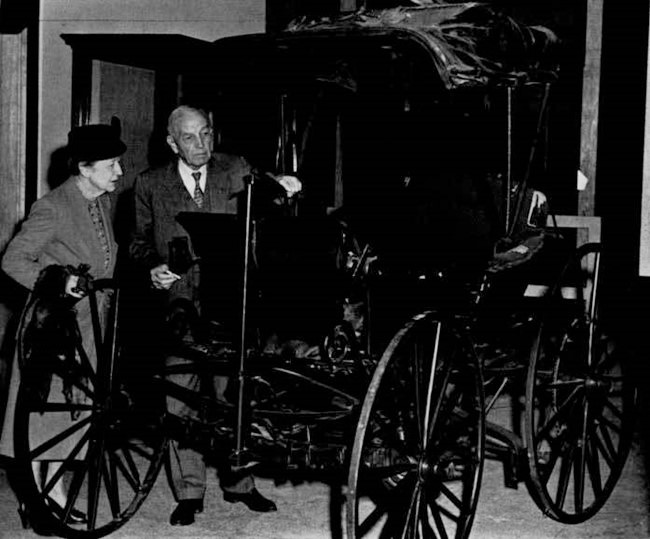 Mr and Mrs J Frank Duryea with the 1893 Motor Wagon before its restoration (Smithsonian Institution)
Mr and Mrs J Frank Duryea with the 1893 Motor Wagon before its restoration (Smithsonian Institution)
Bibliography
Berkebile, Don H. “The 1893 Duryea Automobile.” Museum of History and Technology, 2010.
Duryea, J. Frank. “My Chicago Race Winner.”
Pound, Arthur. “America's First Automobile Race."



